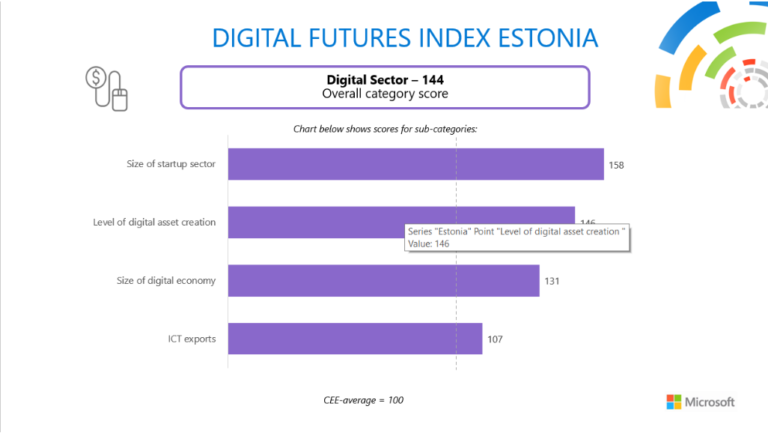May 19, 2022
By Justin Petrone
freelance journalist and writer

When people think about digital identity, the first thing that comes to mind is often government services—being able to vote or file taxes online, using a secure solution, for instance, or being able to sign documents, such as a lease on an apartment, or a contract with a new employer. Yet the financial technology sector is increasingly keen on adopting digital identity, too, a need that Cybernetica, one of the most established players in the Estonian IT space, is striving to serve.
“We see a lot of growth coming from this direction and a need for secure identities and secure identity platforms,” says Hannes Krause, business analyst for digital identity at Cybernetica.
Deep roots
Cybernetica is an old hand in the Estonian ICT market and was spun out of the Institute of Cybernetics in 1997. It maintains an in-house research institute and serves numerous sectors, with cybersecurity, privacy, border surveillance, and interoperability among its areas of expertise.
Digital identity is a newer business unit, albeit one with deep roots. Cybernetica was a part of the consortium that created the X-Road, the backbone of Estonia’s ecosystem of digital services, dubbed e-Estonia, and helped roll out online voting in 2005 on the back of digital identity.

In 2017, though, it introduced SplitKey, a new, smartphone-based authentication and signing solution that relies on the user’s smart device for authentication and electronic signing. It can also be used to access financial services and sign off on purchases.
Krause, who held posts in the Estonian Government Office and at RIA, the Estonian Information System Authority, says he decided to join Cybernetica because he was impressed by the SplitKey technology.
Smart-ID
Cybernetica’s cryptography technology has also found use in SK ID Solutions’ Smart-ID application, which is used widely throughout the region for authentication of digital signatures.
According to the Smart-ID website, there are currently 637,332 users in Estonia (out of a total population of 1.3 million), 1,053,461 users in Latvia (total population of 1.9 million), and 1,526,991 users in Lithuania (total population of 2.8 million). Top users in the Baltics include the banks Swedbank, LHV, Coop, Luminor, and SEB. Smart-ID has been adopted en masse by other parts of the Baltic fintech sector, ranging from firms like Monestro, which supports peer-to-peer investments, to Funderbeam, a Tallinn-based global equity funding, and trading platform. In Estonia alone, 40 financial services firms support Smart-ID and 12 insurance and pension funds.

“At the end of the day, you cannot fight the fact that it is so convenient to use,” says Krause of Smart-ID. “Sometimes I wonder why I ever used other digital identity applications such as Mobile-ID or SIM-card-based identity,” he says. “I look back, and I don’t get it myself.”
“This tells you that it is deeply trusted,” says Krause, “not only because it is secure, but because, especially for the fintech industry, convenience is important, together with no compromises in security.”
SK ID Solutions CEO Kalev Pihl says that Cybernetica has been a “partner for SK in many of our adventures” throughout the years, Smart-ID among them. “Cybernetica is an exceptional partner in Estonia from the point of in-house research ability that almost does not exist in any other IT development company,” says Pihl. “Their field of interest in cryptography has also been handy for identity-related developments. We have gained a lot from our cooperation, and I am sure it goes the other way around,” he says.
A European digital identity?
Last year, the European Commission proposed creating a trusted and secure digital identity for all Europeans, including digital identity wallets that citizens could use to identify themselves and store and manage identity data and documents electronically. It could also be used to access financial services. The Commission is currently gathering feedback from interested parties via an online platform, and a toolbox for addressing technical aspects of the planned system is expected in September.
According to Krause, Cybernetica is interested in advising the project, as any digital wallet could use its SplitKey technology to achieve the highest assurance. Krause maintains that the uptake of any digital identity, especially for accessing financial services, must be easy to use.
“If you need to connect any physical security element, like a card reader or a PIN-calculator, this project will fail, full stop,” says Krause. “I think this is what the fintech and banking industry will want to avoid,” he adds. “They would want such a wallet to be different.”
The company is already working on a digital wallet, he adds, together with SK Solutions. The European Regional Development Fund has awarded the firms €1.4 to undertake the project. Announced in April, the project will run for 18 months.
✈️ Can’t travel but want to hear the e-Estonia story or implement e-services in your country or company? Take a look at our services and get in touch – we’ve got you covered!
Resouce: e-estonia







